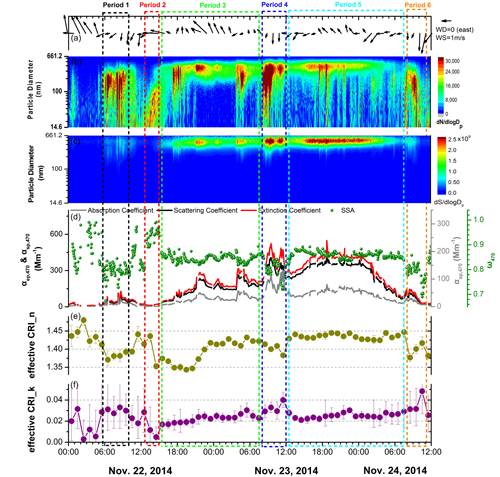Visibility is regarded as an indicator of air quality and is affected by the scattering and absorption of solar light by fine particles. Uncertainties in atmospheric visibility are mainly due to the uncertainties associated with the aerosols’ optical properties, which depend on the physical and chemical properties of atmospheric aerosol, including chemical composition, size distribution, mixing state, morphology, and hygroscopic properties. Understanding how these physical and chemical characteristics affect the optical properties of particles is the key to improving quantitative estimates of direct radiative forcing and determining the environmental effects of particles.
Recently, a research group led by Prof. ZHANG Weijun in Anhui Institute of Optics and Fine Mechanics, Hefei Institutes of Physical Science, Chinese Academy of Sciences (CASHIPS) reported continuous measurements of the optical properties, particle size distributions, and chemical composition of submicron aerosol (PM1.0) in a suburban environment (Huairou) near the megacity of Beijing during the HOPE-J3A (Haze Observation Project Especially for Jing–Jin–Ji Area) field campaign. The campaign covered the period from November 2014 to January 2015 during the winter coal heating season.
It is well known that the carbonaceous component of atmospheric aerosols is composed of organic carbon (OC) and a highly polymerized, dark fraction, which is called elemental carbon (EC) when considered thermally different, or called black carbon (BC) when considered optically different.
The group finds that: elemental carbon (EC), despite its low mass concentration of ~4%, contributed about 17% to the total extinction of PM1.0. Owing to its high absorption efficiency, EC, or alternatively called BC, contributed appreciably to PM1.0 extinction and should be a key target to air quality controls.
Their work entitled Optical properties of atmospheric fine particles near Beijing during the HOPE-J3A campaign has been published in Atmos. Chem. Phys.
This research was supported by the National Natural Science Foundation of China, the Natural Science Foundation of Anhui Province, the Key Research Program of the Chinese Academy of Sciences, and the China Special Fund for Meteorological Research in the Public Interest.

Highly time-resolved evolution of a selected air pollution episode during 22–24 November 2014. (a) Particle number size distribution; (b) particle surface size distribution; (c) aerosol extinction, scattering, absorption coefficients, and SSA at λ=470 nm; (d) retrieved real part of CRI; (e) retrieved imaginary part of CRI. The air pollution episode was divided into six shorter periods to clearly show the evaluation
of optical properties during haze formation, development, and decline. (Imaged by XU Xuezhe)
Contact:
Prof. ZHANG Weijun, Ph.D
Anhui Institute of Optics and Fine Mechanics (http://english.aiofm.cas.cn/)
Hefei 230031, Anhui, China
Tel :86-551-65591551
E-mail :wjzhang@aiofm.ac.cn
 Tel: +86-551-65591206
Tel: +86-551-65591206
 Fax: +86-551-65591270
Fax: +86-551-65591270
 Emai: zhous@hfcas.ac.cn
Emai: zhous@hfcas.ac.cn
 350 Shushanhu Road
350 Shushanhu Road